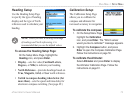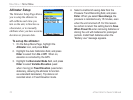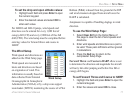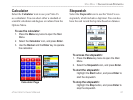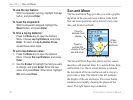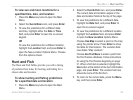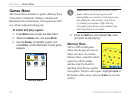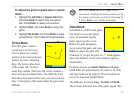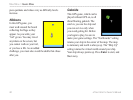
The following is a list of abbreviations and acronyms
commonly used and relate specifically to this feature:
AGL—(Above Ground Level) indicates the altitude
measurement.
CD—(Canopy Drift) measured while the parachute is
open.
DIP—(Desired Impact Point) describes the location
where landing should occur.
Drop Altitude
—measures the altitude when the
jumpmaster exits the aircraft, measured in AGL.
DZ—(Drop Zone) describes the area where the
landing should occur.
DZSTL—(Drop Zone Support Team Leader) defines
the individual in charge at the drop zone.
FFD—(Free Fall Drift) defines the distance traveled
before the parachute is open.
Forward Throw Horizontal
—describes the distance
traveled forward due to aircraft speed.
K values—defines the wind drag values for
parachutes.
HAHO—(High Altitude High Opening) describes a
type of jump.
HALO—(High Altitude Low Opening) describes a
type of jump
HARP—(High Altitude Release Point) describes the
location at which the jumper exits from aircraft.
MSL—(Mean Sea Level) defines the basis for altitude
measure.
Opening Altitude
—describes the altitude when the
jumpmaster opens their chute, measured in AGL.
PRP—(Primary Release Point) defines the
combination of HARP plus the forward throw of
aircraft.
Static Jump—describes a type of jump where wind
speed and direction are assumed constant for the
duration of the jump.
eTrex Vista Cx Owner’s Manual 79
MAIN MENU > SETUP MENU





